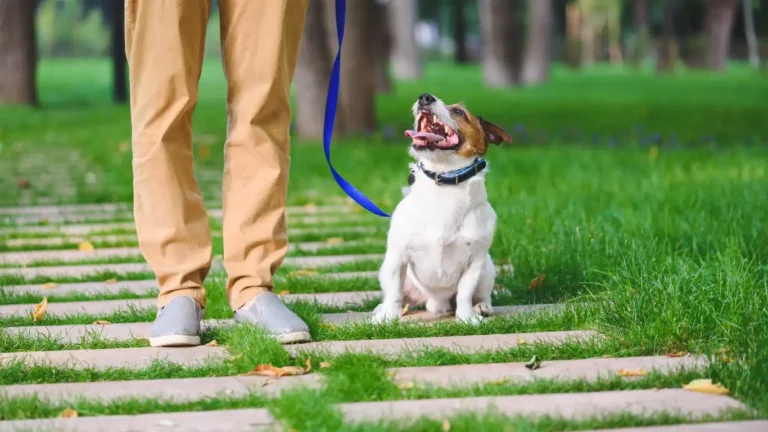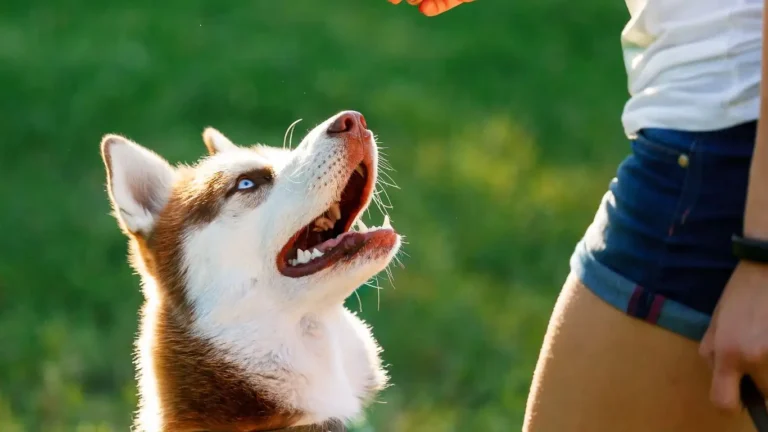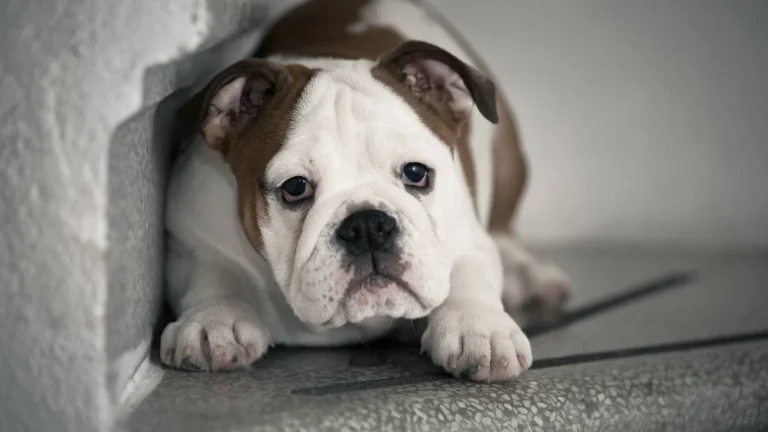How to Stop a Dog from Biting Their Own Tail: 7 Effective Solutions
Dealing with a dog that bites their own tail can be a confusing and frustrating experience, both for pet owners and their furry friends. As someone who’s spent years working as a Veterinary Assistant with a nutrition focus, I’ve seen this issue pop up more than you’d expect. It’s not just a quirky behavior—it can be a sign of something deeper that needs attention. So, if you’re wondering how to stop a dog from biting their own tail, you’re not alone! In this guide, we’ll explore the causes of tail-biting, how it relates to your dog’s health, and what steps you can take to help them break this behavior for good. Whether your dog is a puppy or a full-grown adult, the methods I’ll cover will give you some useful insight into this common problem. Let’s dive into it!
Understanding Tail Biting in Dogs

When a dog starts biting their own tail, it’s easy to assume it’s just a silly habit, but there’s often more to it than meets the eye. Tail-biting can be caused by a variety of issues, from behavioral problems to medical concerns. It’s important to understand what’s going on beneath the surface so you can address the root cause and stop the behavior effectively.
Behavioral Reasons for Tail Biting
In my experience, one of the most common reasons dogs bite their tails is simple boredom or excess energy. Just like how some people fidget when they’re anxious or restless, dogs might chew on their tails as a way to pass the time or release pent-up energy. Puppies, in particular, are prone to this kind of behavior as they explore their world and learn to control their impulses.
Another behavioral cause is stress or anxiety. Dogs are highly sensitive to changes in their environment. If you’ve recently moved, changed their routine, or added a new pet to the family, your dog might begin biting their tail as a coping mechanism. Stress-related behaviors can be tricky to manage, but once you pinpoint the cause, it’s possible to help your dog feel more secure and comfortable.
Medical Causes Behind Tail Biting
Aside from behavioral causes, tail biting can sometimes be a symptom of underlying medical issues. Dogs may chew on their tails if they’re experiencing pain or discomfort. Conditions like flea infestations, allergies, or even infections can make a dog’s tail an irresistible target for biting. If your dog is suddenly fixated on their tail, it’s essential to rule out any physical causes first.
For instance, dogs with flea allergies or food sensitivities often suffer from itchy skin, which can lead to obsessive licking or biting. I’ve seen countless dogs at the clinic with red, irritated tails due to undiagnosed allergies. In some cases, a tail-biting episode may be linked to a more serious health issue like a skin infection, so it’s always a good idea to get a professional opinion if the behavior seems persistent.
When Should You Worry About Tail Biting?
Now, you might be wondering when it’s time to seek professional help. Generally, if your dog is only occasionally biting or licking their tail and there’s no visible injury or discomfort, it’s likely a temporary behavioral issue. However, if the tail-biting becomes excessive or your dog’s tail starts to show signs of injury, redness, or infection, it’s definitely time to take action. The sooner you address it, the better, as tail biting can lead to secondary problems like skin infections or even self-harm if left unchecked.
How to Stop Your Dog from Biting Their Own Tail

So, now that we have a better understanding of the causes behind tail biting, let’s talk about how to stop a dog from biting their own tail. Fortunately, there are several strategies you can try. These range from simple behavioral changes to more involved treatments for medical issues. I’ve worked with many dog owners over the years to help them overcome this problem, so I can tell you first-hand that consistency is key.
1. Address the Root Cause
The first step in solving this problem is determining why your dog is biting their tail in the first place. Start by looking for signs of stress, anxiety, or boredom. Is your dog getting enough exercise? Are they being left alone for extended periods? Consider increasing their playtime, engaging them with puzzle toys, or even taking them to a doggy daycare to burn off some of that extra energy.
If you suspect a medical issue, like allergies or flea infestations, a visit to your veterinarian is in order. Make sure to mention any other symptoms your dog is experiencing, like itching, hair loss, or changes in their bathroom habits. A vet will likely run some tests to rule out infections or underlying conditions and may recommend a treatment plan that could include medication or changes in diet.
2. Try Positive Reinforcement
Positive reinforcement is one of the most effective ways to change a dog’s behavior. Whenever your dog chooses to stop biting their tail, reward them with praise or a treat. Over time, they’ll associate stopping the behavior with something positive and will be more likely to repeat the desired action. However, make sure you’re consistent with your rewards, as dogs thrive on routine and reinforcement.
3. Keep Them Occupied
If boredom is the culprit, providing your dog with more toys or interactive activities can help. Try offering chew toys, treat-dispensing puzzles, or long-lasting bones to keep your dog’s mind and mouth busy. The goal is to redirect their attention away from their tail and onto something more enjoyable. The more engaged they are with other activities, the less likely they’ll be to fixate on their tail.
Identifying Tail Biting in Puppies

When it comes to puppies, tail biting is often a phase they’ll grow out of. However, that doesn’t mean you should ignore it. If your puppy’s tail-biting behavior is frequent, it’s worth investigating further. While it could just be part of their natural exploration phase, it’s still important to keep an eye on things to ensure it doesn’t develop into a more serious problem. Puppies have very sharp teeth, so excessive biting can lead to injury or infection if they’re not careful.
Medical Treatments for Tail Biting

When behavioral adjustments alone aren’t enough to stop a dog from biting their own tail, it’s time to consider medical treatments. As a veterinary assistant, I’ve seen firsthand how physical health issues can contribute to obsessive tail biting, so it’s important to take a well-rounded approach. This might include medications, special shampoos, or even changes in diet depending on the underlying cause. Let’s explore some of these options.
1. Medications for Pain or Itching
If your dog is biting their tail due to pain or itchiness, your vet might prescribe medications to help alleviate the discomfort. Anti-inflammatory medications can reduce swelling and pain, especially if there’s a skin infection or injury. For dogs suffering from allergies or flea infestations, antihistamines or corticosteroids might be recommended to control itching.
I’ve seen a lot of dogs with allergies who were initially misdiagnosed with behavioral issues, only for a simple change in medication to make a world of difference. If you’re unsure whether your dog’s tail-biting behavior is related to allergies or pain, a vet visit is essential. They’ll perform tests to determine if an allergy, parasite, or infection is the culprit and suggest the best treatment plan.
2. Special Shampoos and Topical Treatments
Another way to help your dog is with medicated shampoos or topical treatments. If your dog has a skin condition causing itching or discomfort, using the right shampoo can provide relief. These shampoos are specially formulated to soothe the skin and reduce inflammation, which in turn can help deter the tail-biting behavior.
In some cases, your vet may also recommend a topical ointment or cream to apply directly to the affected area. These treatments help moisturize the skin and prevent infections that might arise from the dog biting or licking the area too much. I often advise owners to keep an eye on their dog’s tail during treatment to ensure they don’t re-aggravate the area by licking or chewing.
3. Dietary Adjustments
Diet can play a significant role in your dog’s overall skin health. Dogs that suffer from food allergies or sensitivities are more likely to experience itchy skin or digestive upset, which can lead to behaviors like tail-biting. If you suspect a food sensitivity might be to blame, a change in diet could be the key to stopping your dog from biting their tail.
Over the years, I’ve worked with many owners who’ve seen dramatic improvements in their dog’s skin condition after switching to a hypoallergenic or limited-ingredient dog food. You can also try adding Omega-3 fatty acids to your dog’s diet, which are known to promote healthy skin and coat. A well-balanced diet will not only improve your dog’s skin health but also contribute to their overall well-being, which can help reduce anxiety-related behaviors.
Behavioral Training Techniques to Stop Tail Biting

As we’ve already discussed, sometimes tail-biting is a behavioral issue that requires patience and consistent training. In many cases, addressing the root cause, such as boredom or anxiety, can help significantly. But let’s get into some specific training techniques that can help break the habit, especially if your dog’s tail-biting has become a routine part of their day.
1. Redirection Techniques
One of the most effective ways to stop a dog from biting their tail is by redirecting their attention to a more acceptable behavior. When you catch your dog in the act of biting their tail, gently interrupt them (without causing fear) and immediately offer a more engaging activity, like a chew toy, a treat puzzle, or a game of fetch. The key here is to replace the undesirable behavior with something fun and rewarding.
Personally, I’ve found that dogs who were bored or restless responded really well to this redirection method. It’s also important to remain calm and consistent—if your dog bites their tail and you just yell or react negatively, it could make them more anxious, making the problem worse. Instead, offer a distraction and praise your dog when they engage with the new activity.
2. Use of Anti-Chew Products
Sometimes, the temptation to chew on a tail is simply too strong for some dogs to resist. In these cases, you can use anti-chew sprays that make the tail taste unpleasant but are perfectly safe for dogs. These sprays can serve as a deterrent when your dog attempts to chew on their tail. While this might not solve the root cause of the behavior, it can help interrupt the cycle of chewing long enough for you to implement other strategies.
While it’s a great short-term solution, I always suggest combining anti-chew products with other behavioral techniques like redirection or increased exercise to ensure that your dog’s tail-biting habit doesn’t come back once the spray wears off.
3. Establish a Routine
Dogs thrive on routine, and establishing a consistent daily schedule can help reduce anxiety-related behaviors like tail biting. Try to keep your dog’s mealtimes, exercise sessions, and playtimes as consistent as possible. Predictable routines can help your dog feel secure and reduce the likelihood of anxiety-driven behaviors, including obsessive tail biting.
For example, if you know that your dog tends to start biting their tail after you leave for work, try to set up a distraction for them, such as an interactive toy or a cozy blanket, so they feel comforted when you’re not around. The more secure your dog feels in their environment, the less likely they are to turn to tail biting as a way to cope.
Managing Tail Biting in Senior Dogs

Tail biting isn’t limited to puppies or young dogs—senior dogs can develop this behavior as well. As dogs age, their physical health can decline, leading to discomfort or pain that may trigger tail biting. For example, senior dogs are more prone to arthritis, which can make certain areas of their body, like the tail, feel stiff or painful. If your older dog starts showing interest in their tail, it could be a sign of physical discomfort rather than a behavioral issue.
In such cases, it’s important to provide comfort and care tailored to their age and health status. Gentle stretches, joint supplements, or even specific bedding designed for older dogs can help alleviate some of the discomfort. It’s also wise to take your senior dog to the vet for a thorough check-up, especially if the tail biting seems like a new behavior for them.
Long-Term Solutions and Prevention for Tail Biting

Now that we’ve explored medical treatments, behavioral techniques, and management strategies, it’s time to think about long-term solutions to prevent tail biting from becoming a recurring issue. As a veterinary assistant with a focus on nutrition, I can’t stress enough how important prevention is in maintaining your dog’s overall health and happiness. Preventing tail biting isn’t just about solving a temporary problem; it’s about ensuring that your dog stays healthy, both physically and emotionally, in the long run.
1. Regular Veterinary Check-Ups
Prevention starts with regular veterinary check-ups. Dogs, just like humans, are prone to health changes as they age, and many issues that lead to tail-biting—such as allergies, infections, or arthritis—can go unnoticed until they become more severe. Scheduling annual (or bi-annual) check-ups with your vet can help catch these issues early and prevent discomfort that could lead to tail biting. During a check-up, your vet will check for any signs of fleas, skin conditions, or underlying health issues that could be triggering the behavior.
I’ve worked with countless pet owners who initially thought their dog’s tail-biting behavior was “just a phase” only to later discover it was linked to something more serious. Regular vet visits are an essential part of your dog’s long-term care plan. It’s better to be proactive than reactive, especially when it comes to your dog’s health.
2. Create a Stimulating Environment
Preventing boredom is one of the most effective ways to curb destructive behaviors like tail biting. Dogs are social creatures that thrive on interaction and mental stimulation. If your dog is home alone for long periods of time, they might resort to tail-biting as a way to self-soothe or entertain themselves. To prevent this, make sure your dog’s environment is stimulating and engaging, even when you’re not around.
Consider investing in toys that challenge your dog mentally. Puzzle feeders, treat-dispensing toys, and even interactive toys like balls that squeak or make noise can keep your dog entertained for hours. I often suggest mixing up your dog’s play routine to keep things fresh. For example, try different outdoor activities like hiking, swimming, or even agility training. The more variety you can provide, the less likely your dog is to develop obsessive behaviors like tail biting.
3. Consistent Training and Socialization
Training and socialization play a major role in preventing behavioral issues. If your dog is anxious, fearful, or reactive in certain situations, they may be more prone to stress-related behaviors like tail biting. Training your dog to respond to basic commands (sit, stay, leave it) can help you gain better control over their behavior and prevent them from turning to tail-biting when they’re feeling uneasy.
Socializing your dog with other dogs and people can also help reduce anxiety and prevent boredom. Positive experiences with new environments, people, and animals can boost your dog’s confidence and decrease stress-induced behaviors. If you’re not sure where to start with training, consider enrolling your dog in a puppy or adult dog obedience class. Not only does this help with behavior, but it also creates a bonding experience between you and your dog.
The Role of Nutrition in Tail Biting Prevention

As a Veterinary Assistant with a focus on nutrition, I’ve seen firsthand how important diet is in maintaining overall health. A well-balanced diet can help your dog’s skin and coat stay healthy, which in turn can reduce the likelihood of itching and discomfort that could lead to tail biting. Proper nutrition also boosts your dog’s immune system, reduces the risk of allergies, and can even help with stress management.
1. Ensure a Balanced Diet
Feeding your dog a high-quality, balanced diet is one of the best ways to prevent tail biting caused by nutritional deficiencies. Look for dog foods that contain high-quality protein, healthy fats, and plenty of fiber. Essential fatty acids like Omega-3 and Omega-6 are particularly important for maintaining skin health and can help reduce itching and inflammation that may lead to tail biting.
Additionally, make sure that your dog’s food is free from artificial additives and fillers, which can sometimes contribute to food allergies or sensitivities. If your dog has a sensitive stomach or allergies, talk to your vet about switching to a hypoallergenic or limited-ingredient diet. These diets are formulated to minimize common allergens and provide all the nutrients your dog needs without aggravating their skin or digestive system.
2. Supplements for Skin Health
In some cases, it might be beneficial to supplement your dog’s diet with additional nutrients. Omega-3 fatty acids, in particular, are known for their anti-inflammatory properties and their ability to promote healthy skin and a shiny coat. Fish oil supplements are a great source of Omega-3s, and many dog owners have seen positive results from adding them to their pet’s diet. Not only do these supplements help reduce itching, but they can also improve your dog’s coat condition, making it shinier and healthier.
Another supplement that might be useful is glucosamine, which is often recommended for dogs with joint issues. Since some dogs bite their tails due to discomfort from joint pain or arthritis, glucosamine may help alleviate some of that discomfort and reduce the tail-biting behavior. As always, consult your vet before adding any new supplements to your dog’s routine to ensure they’re the right fit for their needs.
Resources for Further Information
As you work through the steps to stop your dog from biting their own tail, it’s important to stay informed and seek guidance from trusted sources. There are a number of organizations and websites dedicated to providing reliable and evidence-based information on dog behavior, health, and nutrition. Here are a few resources to help you along the way:
- American Kennel Club (AKC) – Offers expert advice on dog breeds, behavior, training, and health.
- PetMD – A trusted resource for pet health and veterinary advice.
- National Institutes of Health (NIH) – For research on health-related topics, including those related to pets.
- Health.com – Provides useful health tips, including some for managing pet health.
Disclaimer
The information provided in this article is for educational purposes only and should not be used as a substitute for professional veterinary advice. Always consult with a licensed veterinarian to address any concerns about your dog’s health or behavior. Every dog is unique, and what works for one may not work for another. Be sure to work closely with your vet to develop the best plan of action for your pet’s specific needs.






